I'm an interior decorator. Here are 10 things I would never have in my bedroom.
Kelly Kruger

- As an interior decorator, there are quite a few items I'd skip when designing the bedroom.
- Create a relaxing environment by avoiding vibrant colors, busy patterns, and bright overhead lights.
Polyester sheets may be cheaper than other fabrics but I still wouldn't buy them.
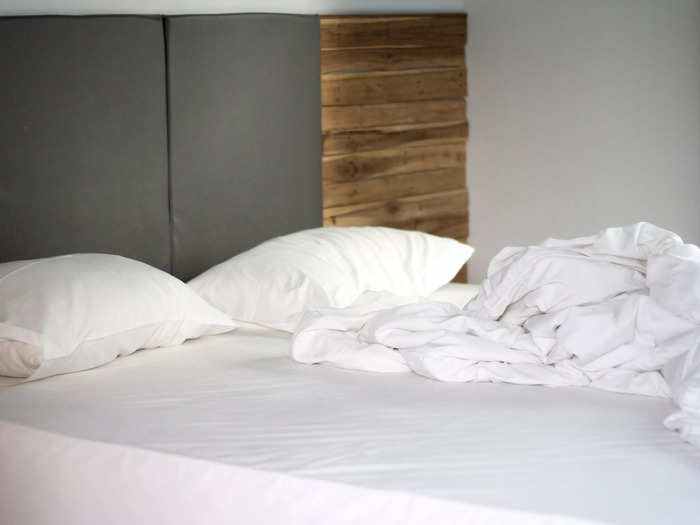
My go-to fabric for sheets will always be 100% cotton, followed by pricier linen and silk. But I always avoid polyester when it comes to bedding.
Polyester is made from plastic fibers and isn't as breathable as natural materials, making it unideal for temperature control. It can trap moisture and create static cling, which can disrupt comfortable sleep.
Unlike a cotton sheet, which will soften over time, polyester materials may show wear and tear more quickly with regular washes.
Busy patterns and vibrant colors may disrupt your wind-down time before bed.
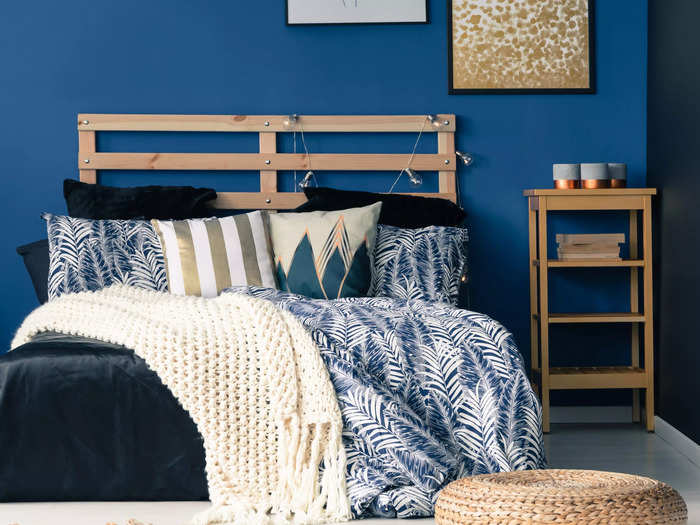
I love to decorate with bright colors and bold patterns but I use them sparingly in a bedroom. A high-saturation color palette or a busy pattern can strain the eyes and energize the mind, making it more difficult to relax.
Instead, I strike a balance between busy and bland by adding contrast with light shades, dark muted colors, and lots of varying textures to create visual interest and a relaxing environment.
For example, color enthusiasts could pair off-white wall paint with dark-navy velvet curtains. If you're a pattern lover, opt for the kinds that appear in textures, like in handwoven throw pillows.
Leave the wicker furniture at the beach house.
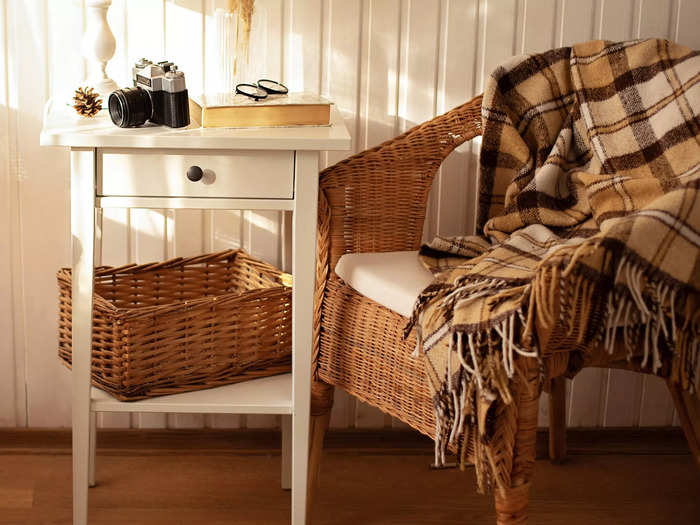
The natural-fiber furniture trend recirculates every couple of years. Though it looks cute amongst eclectic bohemian decor, I recommend leaving it out of the bedroom.
The distinct woven texture can add dimension but its numerous crevasses collect dust and add to your cleaning routine.
If you're OK with periodically vacuuming your headboard and really want to incorporate wicker furniture, go for a modern weave style. And unless you're decorating an actual beach house, I recommend using one or two accessories of rattan decor rather than an entire bedroom set.
Highly reflective finishes may be elegant but they don't make for a cozy feel.
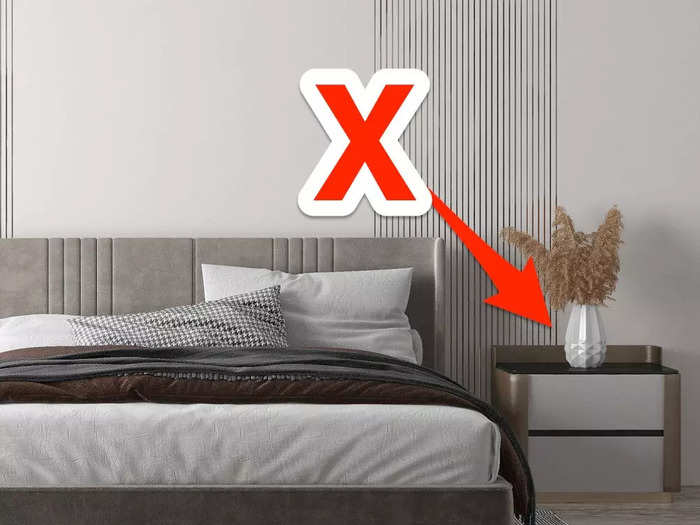
High-gloss or polished finishes are great for elevating an atmosphere but I avoid using highly reflective items in the bedroom.
Polished marble tabletops, high-gloss painted walls, and chrome hardware can make the overall space feel less cozy, as they're visually harsh and tangibly cold. Keep those materials for spaces like the living room or office.
Instead, opt for brushed metal, warm wooden furniture, and nonreflective textiles and wall coverings. I even suggest matte paint finishes to absorb as much ambient light as possible.
Open closets and storage solutions can quickly turn into clutter.
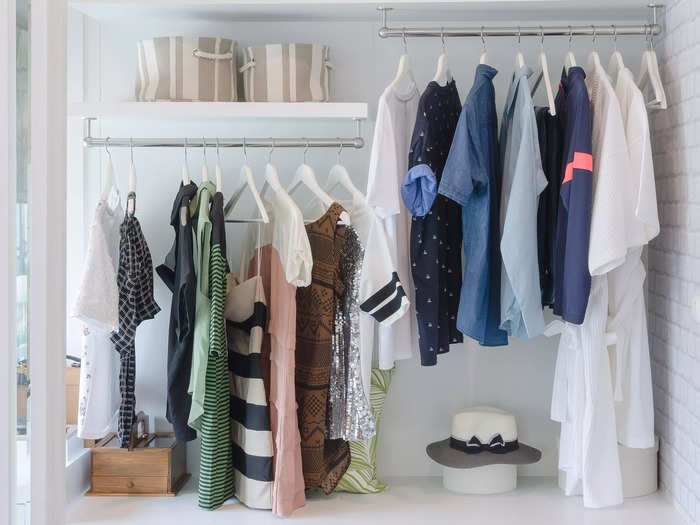
Open-storage solutions have become more popular but the bedroom is one area where I wouldn't recommend having items out on display.
Creating a visually relaxing zone to wind down in can be challenging enough without having to worry about your sweaters being neatly lined up.
I prefer wardrobe solutions with solid doors and drawers so that your bedroom can feel streamlined and neat once all your items are put away. The less visual clutter, the better.
Avoiding mirrors in the bedroom is more than just superstition.
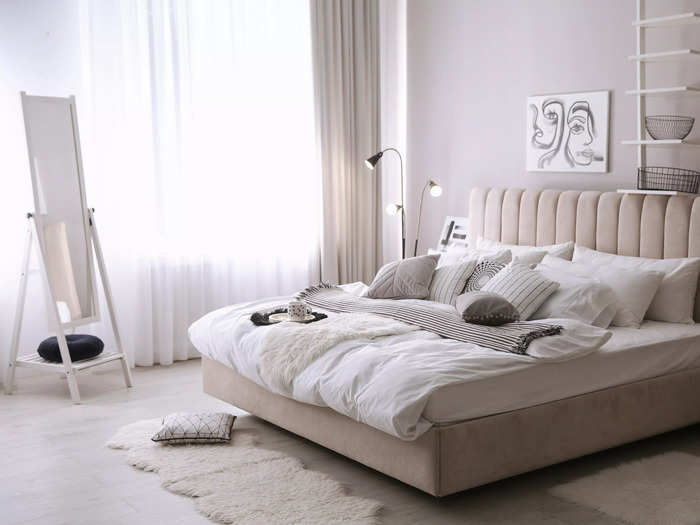
I think too many mirrors, especially across from or in view of the bed, can disrupt a good night's sleep. Some consider it bad luck, and in the practice of Feng Shui, it's believed that a mirror will reflect the energy of a room and potentially amplify negative energy.
I use mirrors sparingly so I don't catch any movement in them when it's time to unwind at night.
If you choose to incorporate a mirror into your space, try placing it thoughtfully to reflect light and give the illusion of more space without showing the bed.
Nightstands without storage are a missed opportunity.
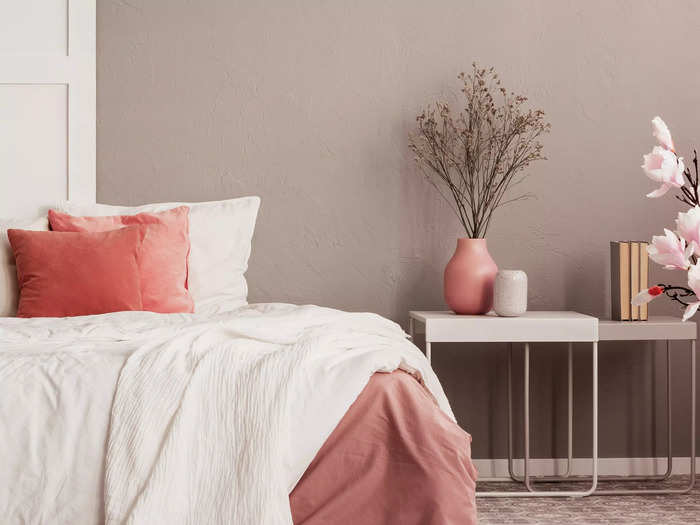
Though minimalistic nightstands create a light, airy look in pictures, the inconvenience of not having a bedside storage solution will get old fast. As clutter piles up along the tabletops, your space will turn from chic to stressful with nowhere to hide your unmentionables.
I always choose a nightstand with at least one fully concealed drawer. Having some open shelving for a book or two might add a nice touch but be mindful, as this can also create clutter.
For an extra touch of luxury, opt for nightstands with built-in charging stations so that you can tuck away your devices at night and avoid any lingering blue light.
Hardwood, poured-concrete, and tiled floors should never be left bare in the bedroom.
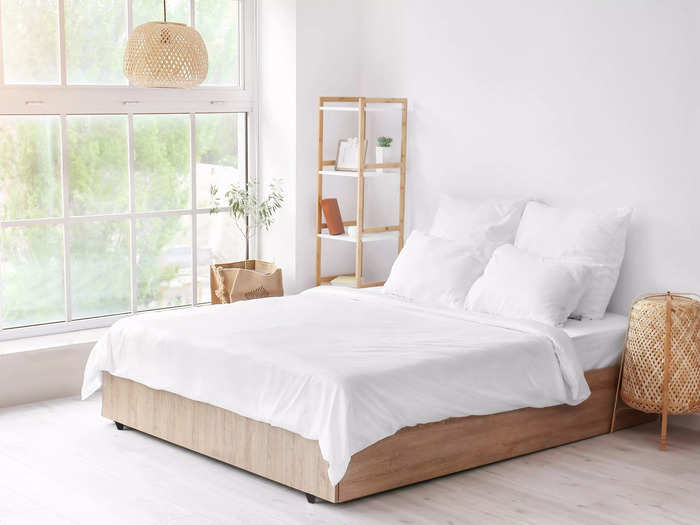
Hardwood floors might be popular, but I'd consider installing wall-to-wall carpeting in the bedroom. Carpet dampens sound, adds insulation to a space, and is luxuriously cozy to walk on barefoot.
That being said, permanent carpeting can be divisive among homeowners and renters and tends to show wear and tear more quickly than hardwood flooring.
If wall-to-wall carpeting isn't for you, opt for the perfect balance by incorporating large area rugs into your bedroom. As a low-traffic area, the bedroom can be an excellent place for a high-pile, plush, or even shag carpet.
Overhead lighting can overpower the bedroom.
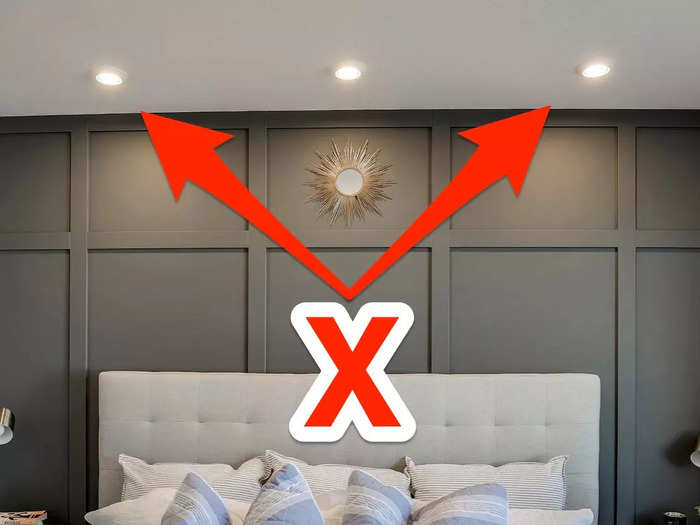
Recessed lighting and large chandeliers will create a lot of light but might not fit the relaxing vibe of the bedroom. When creating a lighting design for the bedroom, I like to avoid overhead bulbs and focus on variety.
Incorporating built-in sconces and connecting bedside lamps or lighting accents to a wall switch are great ways to bring soft light into your bedroom.
If you love the look of a statement chandelier, incorporate a dimmer or smart-bulb setup to control your lighting.
Retire the matchy-matchy comforter and pillow trend.
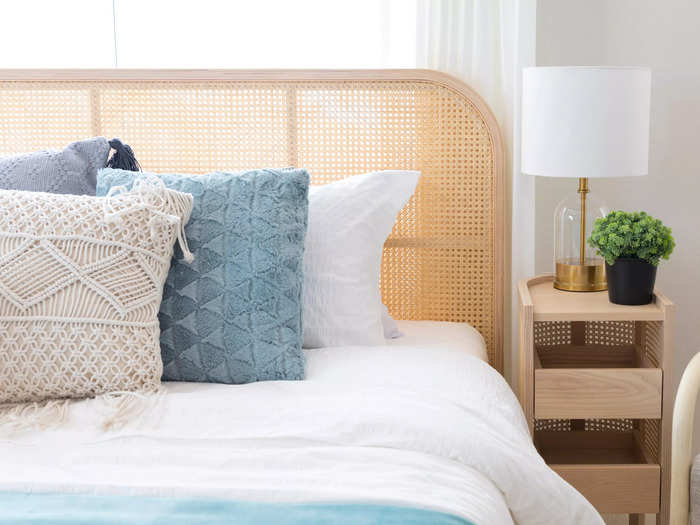
Oftentimes, a comforter will come with two pillow shams or a collection of matching throw pillows to create a completed set. Though it may look coordinated, it doesn't give off the elevated look of a designer bedroom.
Instead, try coordinating standalone shams and throw pillows with the color palette of your comforter or bedroom.
Create variation by using solid sheets, textured throw pillows, and fabric patterns that go well together but don't make an exact match. This technique will enhance the bed as the focal point of the room and you'll get to choose more comfortable pillow fabrics.
Popular Right Now
Popular Keywords
Advertisement